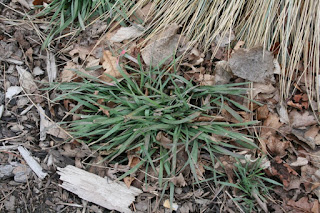Traditionally, garlic is planted in the fall, but it can also be planted in the spring and now's the time. Garlic is a member of the allium family, which includes leeks, shallots and onions. There are many different varieties of garlic, all of which fall into three general categories: Softneck, Hardneck and Elephant garlic.
While softneck, hardneck and elephant garlic can all be planted now, generally you're going to find softneck garlic seed is most readily available this time of year. Softneck garlic is the kind you will generally find in the grocery store. The two common types of softneck garlic are artichoke and silverskin. Artichoke varieties include Inchelium Red and Italian Purple. Silverskin varieties include Italian Late, Silver Rose and Nootka Rose. Another advantage of planting softneck garlic in the spring is softneck tends to mature faster than hardneck garlics.
Garlic likes sun and well-drained soils, so begin by choosing a site in your garden which will receive full sun. Next, incorporate a good soil amendment such as Sheep, Peat and Compost into the planting site.
Working some bone meal into the soil at this point, will help your garlic develops strong roots, once you plant the individual cloves. Now that the soil is ready, it's time to prepare the garlic seed bulb for planting.
Begin by separating the individual cloves from the bulb, known as "cracking" the bulb. Start by removing the outer skin, then gently pull the cloves away from each other. You should end up with a number of cloves. Plant each of these cloves flat side down, pointy side up. Spring planted garlic won't mature as large as fall planted garlic, so it can be planted closer together; 2"-3" apart and about 2" deep. Garlic will do fine planted in rows, in containers or to fill in that odd shaped spot in the garden. Because garlic is one of the best companion crops you can grow, you might also consider planting some near your tomatoes or your roses and perennials to help deter insects. You'll start harvesting spring planted garlic about 12 to 15 weeks from planting. Generally, you’ll find spring planted garlic will not divide into cloves, but the single bulb will still afford you a unique garlic flavor.
While softneck, hardneck and elephant garlic can all be planted now, generally you're going to find softneck garlic seed is most readily available this time of year. Softneck garlic is the kind you will generally find in the grocery store. The two common types of softneck garlic are artichoke and silverskin. Artichoke varieties include Inchelium Red and Italian Purple. Silverskin varieties include Italian Late, Silver Rose and Nootka Rose. Another advantage of planting softneck garlic in the spring is softneck tends to mature faster than hardneck garlics.
Garlic likes sun and well-drained soils, so begin by choosing a site in your garden which will receive full sun. Next, incorporate a good soil amendment such as Sheep, Peat and Compost into the planting site.
Working some bone meal into the soil at this point, will help your garlic develops strong roots, once you plant the individual cloves. Now that the soil is ready, it's time to prepare the garlic seed bulb for planting.
Begin by separating the individual cloves from the bulb, known as "cracking" the bulb. Start by removing the outer skin, then gently pull the cloves away from each other. You should end up with a number of cloves. Plant each of these cloves flat side down, pointy side up. Spring planted garlic won't mature as large as fall planted garlic, so it can be planted closer together; 2"-3" apart and about 2" deep. Garlic will do fine planted in rows, in containers or to fill in that odd shaped spot in the garden. Because garlic is one of the best companion crops you can grow, you might also consider planting some near your tomatoes or your roses and perennials to help deter insects. You'll start harvesting spring planted garlic about 12 to 15 weeks from planting. Generally, you’ll find spring planted garlic will not divide into cloves, but the single bulb will still afford you a unique garlic flavor.























